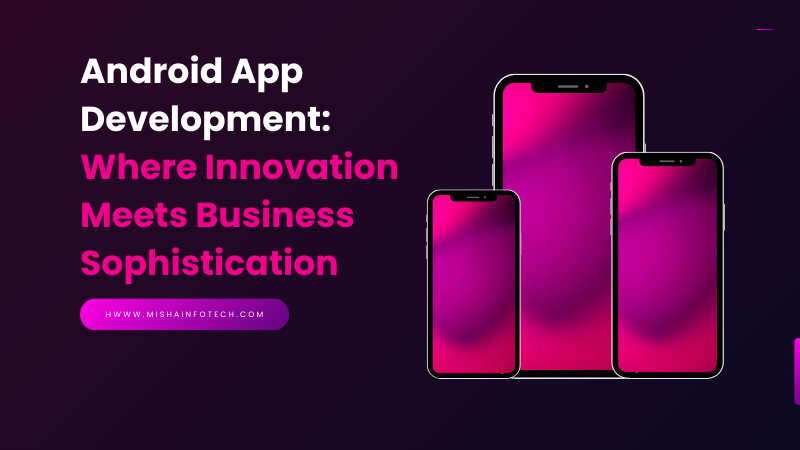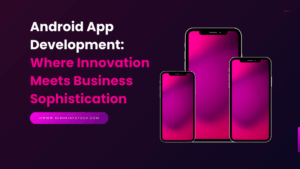PHP, which stands for “Hypertext Preprocessor,” is one of the most widely used scripting languages for web development. Since its inception in 1994, PHP has undergone significant evolution, transforming from a simple set of tools for creating personal home pages to a robust, full-fledged programming language that powers millions of websites and applications today. This article explores the key versions of PHP, highlighting how each iteration has influenced the landscape of web development services, with real-world examples and case studies.
1. The Birth of PHP/FI: Laying the Foundation (1994-1997)
PHP began as a simple set of Common Gateway Interface (CGI) scripts written by Rasmus Lerdorf to track visits to his online resume. Initially known as PHP/FI (Personal Home Page/Form Interpreter), it allowed users to create dynamic web pages quickly. The simplicity and ease of use of PHP/FI made it popular among web developers, laying the groundwork for its future versions.
Example: Early websites used PHP/FI to generate dynamic content, such as displaying the current date and time or processing simple form data. This basic functionality was groundbreaking at the time, enabling more interactive and personalized web experiences.
2. PHP 3: The First Major Release (1998)
PHP 3, released in 1998, marked a significant turning point in the evolution of PHP. It was a complete rewrite of PHP/FI, developed by Andi Gutmans and Zeev Suraski, who joined forces with Rasmus Lerdorf. This version introduced a more powerful and flexible syntax, support for multiple databases, and improved performance.
Influence on Web Development: PHP 3’s enhanced capabilities made it a popular choice for web development services. It became the go-to language for developers creating dynamic websites, especially for small to medium-sized businesses looking to establish an online presence without investing heavily in proprietary technologies.
Case Study: Early E-commerce Websites Many early e-commerce platforms, like osCommerce, were built using PHP 3. These platforms enabled small businesses to set up online stores with features like product catalogs, shopping carts, and payment gateways, revolutionizing the way businesses reached customers.
3. PHP 4: Bringing Stability and Performance (2000)
PHP 4, released in 2000, was a game-changer in terms of performance and scalability. It introduced the Zend Engine 1.0, a new core that significantly improved the language’s speed and stability. PHP 4 also brought better session handling, output buffering, and support for more complex applications.
Influence on Web Development: With PHP 4, developers could build more sophisticated and resource-intensive web applications. This version’s improved performance allowed PHP to compete with other programming languages like Java and ASP.NET, cementing its place in the web development industry.
Example: Content Management Systems (CMS) like WordPress began to emerge, leveraging PHP 4’s capabilities to provide easy-to-use platforms for creating and managing websites. WordPress, which powers over 40% of all websites today, owes much of its early success to PHP 4’s robustness.
4. PHP 5: Embracing Object-Oriented Programming (2004)
The release of PHP 5 in 2004 was a milestone that introduced object-oriented programming (OOP) features, which had become a standard in modern programming languages. PHP 5 also included the Zend Engine 2.0, further improving performance and adding new features like improved support for MySQL, SQLite, and XML.
Influence on Web Development: PHP 5’s introduction of OOP made it possible to develop more modular and maintainable code, aligning PHP development with best practices in software engineering. This version also made PHP a more viable option for large-scale enterprise applications.
Case Study: Magento Magento, a popular open-source e-commerce platform, was built using PHP 5. Its architecture, heavily reliant on OOP, allowed developers to create highly customizable and scalable online stores. Magento’s success in the e-commerce space showcases how PHP 5 empowered developers to build complex, feature-rich applications.
5. The Unfulfilled Promise of PHP 6
PHP 6 was an ambitious project aimed at introducing native Unicode support, which would have allowed developers to handle multi-language content more efficiently. However, the project encountered significant challenges, leading to its eventual abandonment.
Influence on Web Development: Although PHP 6 was never officially launched, the lessons learned during its development influenced later versions of PHP. The community’s response to PHP 6 also highlighted the importance of balancing new features with stability and backward compatibility in web development services.
6. PHP 7: A Leap Forward in Performance (2015)
After the setback of PHP 6, the release of PHP 7 in 2015 was a breath of fresh air for the PHP community. PHP 7 introduced the Zend Engine 3.0, also known as PHPNG (PHP Next Generation), which brought significant performance improvements, making PHP twice as fast as its predecessor. PHP 7 also introduced new features like scalar type declarations, return type declarations, and anonymous classes.
Influence on Web Development: PHP 7’s performance enhancements made it an attractive option for high-traffic websites and applications, reducing server costs and improving user experience. The new language features also encouraged developers to write cleaner, more efficient code.
Example: Facebook, one of the largest websites in the world, transitioned a significant portion of its codebase to PHP 7, resulting in substantial performance gains. This move demonstrated PHP 7’s capability to handle large-scale web applications with millions of users.
7. PHP 8: Introducing JIT and Modern Features (2020)
PHP 8, released in 2020, continued to build on the improvements of PHP 7, with the introduction of Just-In-Time (JIT) compilation, which further enhanced performance, particularly for CPU-intensive tasks. PHP 8 also brought modern language features like union types, named arguments, attributes, and match expressions.
Influence on Web Development: PHP 8 positioned itself as a modern, forward-looking language that could keep pace with the evolving needs of web development. The introduction of JIT and other features made PHP 8 an excellent choice for building cutting-edge web applications.
Case Study: Laravel Framework Laravel, one of the most popular PHP frameworks, quickly adopted PHP 8’s new features, allowing developers to build applications with more expressive and concise code. Laravel’s success in the PHP community underscores how modern features in PHP 8 can drive innovation in web development services.
8. The Role of PHP Frameworks in Its Evolution
Throughout its evolution, PHP has been supported by a vibrant ecosystem of frameworks that have helped shape its use in web development. Frameworks like Zend, Symfony, CodeIgniter, and Laravel have provided developers with tools and best practices to build robust, secure, and scalable web applications.
Influence on Web Development: These frameworks have played a crucial role in promoting standardized coding practices, improving security, and reducing development time. By providing reusable components and libraries, PHP frameworks have enabled developers to focus on building custom features and delivering high-quality web development services.
Example: Symfony, a PHP framework, has been widely adopted in enterprise environments for its flexibility and extensive features. Many large-scale projects, including the Drupal CMS, rely on Symfony components, showcasing how PHP frameworks have influenced modern web development.
9. PHP in the Era of Modern Web Development
As web development continues to evolve, PHP remains a dominant force, powering over 75% of websites worldwide. Its adaptability and continuous improvement have allowed it to stay relevant in an industry that is constantly changing.
Influence on Web Development Services: PHP’s evolution has directly impacted the range of web development services available today. From small business websites to large enterprise applications, PHP development continues to offer solutions that are cost-effective, scalable, and versatile.
Case Study: WordPress and WooCommerce WordPress, built on PHP, is the most popular content management system globally. Its e-commerce plugin, WooCommerce, powers millions of online stores, enabling businesses to sell products and services online. The success of WordPress and WooCommerce highlights PHP’s ability to support diverse web development needs.
Conclusion
The evolution of PHP from its humble beginnings as a simple scripting tool to a powerful programming language has been marked by key milestones that have significantly influenced web development. Each version of PHP has brought new features, performance improvements, and capabilities that have empowered developers to build increasingly complex and dynamic web applications. As PHP continues to evolve, it remains a cornerstone of web development services, offering a reliable and flexible platform for building the web’s future.
By understanding the evolution of PHP, businesses, and developers can make informed decisions when choosing the right technologies for their web development projects, ensuring they leverage the full potential of PHP to deliver exceptional digital experiences.














